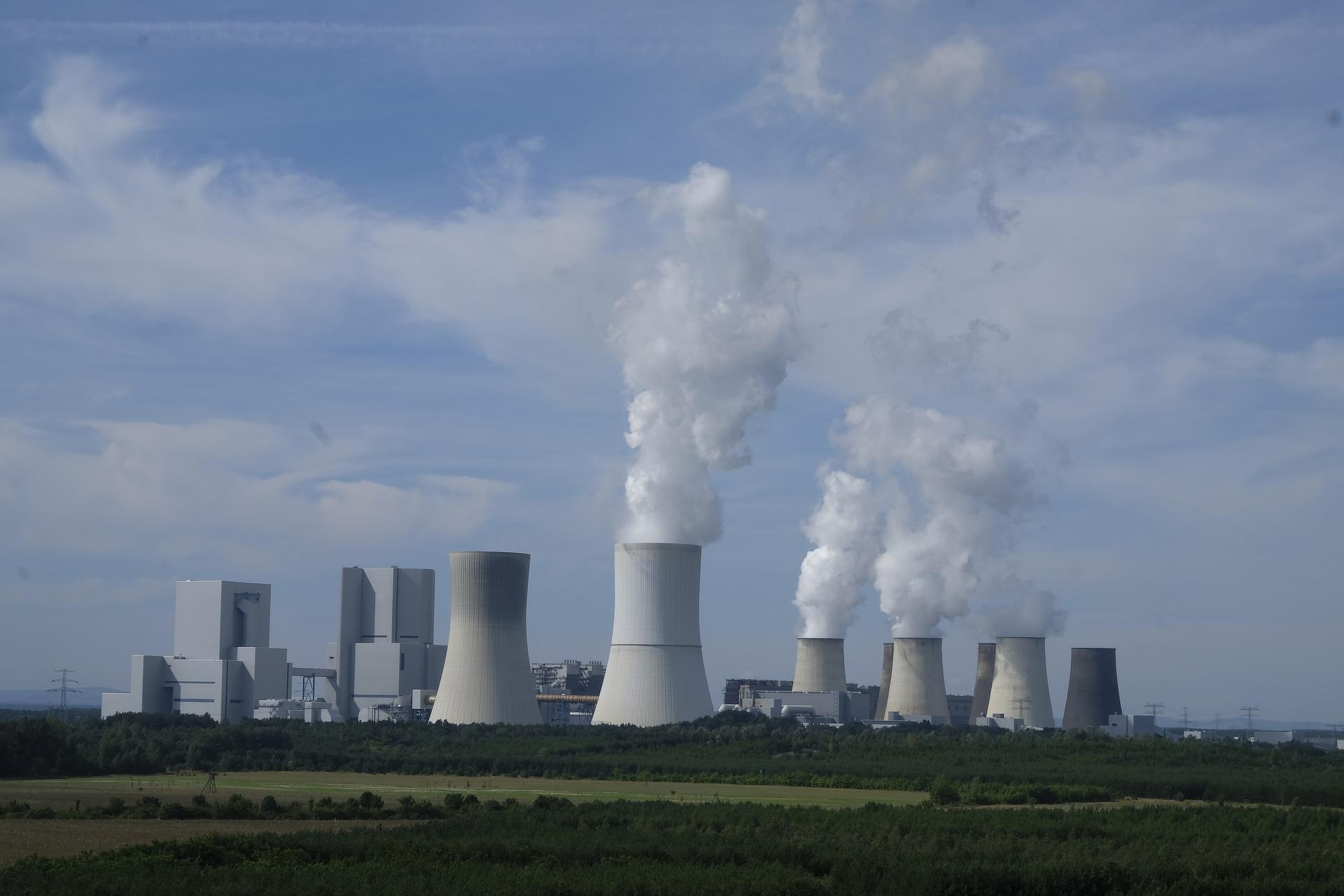Could nuclear power experience a resurgence as a cheap and clean energy source as nations fail to meet their carbon emission goals?

Nuclear power is now firmly back in the spotlight as an increasing number of experts, governments and NGOs lead the charge to reposition it as a safe, reliable, and green energy source as the world comes to grips with the effects of climate change.
While many might be wary of it, given that it uses uranium U-235, a highly radioactive material, nuclear power plants have seen many advances to make them safe. “Aside from its reliability … nuclear power production is relatively compact, with a footprint of little more than five hectares per megawatt. It would take 3 million solar panels or more than 400 wind turbines to provide the same power as a 1-gigawatt reactor, according to the U.S. Department of Energy,” said the report.
Experts stressed we could not solely rely on standard forms of renewable energy for all our electricity needs. As Rethinking Nuclear put it, “A ‘renewables only’ scenario is unrealistic and not supported by science.”
Nuclear option
Uranium U-235 is a finite mineral, yet the energy produced from nuclear fusion produces no carbon dioxide. Additionally, a small amount of U-235 could create a lot of energy. That makes it more sustainable for the environment than fossil fuels.
Spring Power and Gas, a leading U.S. clean energy provider, “estimates the remaining amounts of uranium in the world can serve us for the next 80 years,” it noted. “If we can turn nuclear fusion into a reality, the source of energy would be sustainable for the foreseeable future.”
There are several reasons why climate advocates are considering nuclear power. First, it dramatically limits carbon emissions, thereby saving the planet and its inhabitants while being affordable for developing nations. Second, solar, wind and hydroelectric power stations might be easier and cheaper to build, but they can’t produce enough electricity to meet all demand.
Another reason is that efforts to increasingly rely on renewable sources didn’t dent carbon emissions over the past few years. They increased. That has reinforced calls for the “nuclear option.”
Currently, America is leading the way in nuclear power to generate electricity. The U.S. Energy Information Administration says atomic power accounts for 60% of carbon-free electricity in America, well ahead of water (19%), wind (13%) and solar (3%). Overall, nuclear power accounts for about 20% of America’s energy mix. “But nuclear plants reduced capacity slightly during the economic downturn spurred by the coronavirus pandemic and lockdown,” wrote Jeff McMahon for Forbes in June.
Co-directors of the Stanford Precourt Institute for Energy, on Rethinking Nuclear’s website, state, “If we are to deeply decarbonize our grid in the long term, it would be prudent for [the world] to keep a diversity of options, including nuclear.”
King of renewables?
With air pollution killing an estimated 7 million people per year globally, according to the WHO in 2014, some argue that nuclear power has the lowest “deathprint” of all electricity generation methods. Therefore, governments should consider it safe, provided the obligatory measures of safety are strictly applied.
In a 2013 study for NASA, Pushker Kharecha and James Hansen concluded, “Nuclear energy … needs to be retained and significantly expanded in order to avoid or minimize the devastating impacts of unabated climate change and air pollution caused by fossil fuel burning.”
The Nuclear Energy Institute added, “Because of its remarkable energy density, nuclear power requires far less land than other renewables.” That means that governments could conserve more land, which reduces carbon dioxide levels in the atmosphere. Nuclear power also uses far fewer materials (cement/concrete, glass, steel, fuel and others) than alternative sources. Solar farms require the most, followed by hydropower, wind and lastly, geothermal plants.
Additionally, a 2017 study titled Energy Innovation Reform Project stressed that regardless of a country’s energy mix and self-sufficiency, it needs to include nuclear energy. “While it is theoretically possible to rely primarily (or even entirely) on variable renewable energy resources such as wind and solar, it would be significantly more challenging and costly than pathways that employ a diverse portfolio of resources,” according to a 2017 article for the Proceedings of the National Academy of Sciences of the United States of America.
Figures from the U.S. Energy Information Administration’s 2020 report on domestic consumption and production show that despite two decades of public and private support, wind power produced less than 7.3% of U.S. electricity in 2019. Likewise, solar accounted for less than 1.8%, and hydroelectric power is already close to capacity in the Northern Hemisphere.
Debunking myths
There is an undeniable stigma surrounding nuclear power, dating to the Chernobyl nuclear disaster in 1986. However, the U.N. Scientific Committee on the Effects of Atomic Radiation (UNSCEAR) found “the worst nuclear accident in the world at Chernobyl resulted in 28 deaths among emergency responders and 15 deaths from thyroid cancer between 1991 [and] 2005.”
The second leak was in 2011 at the Fukushima nuclear power plant in Japan, releasing high levels of radiation into the atmosphere and large amounts of radioactive-contaminated water into the Pacific Ocean during and well after the disaster. Yet, there was one death from radiation. Meanwhile, UNSCEAR found that cancer rates remained stable even among plant workers. Additionally, there was no impact on birth or hereditary defects. However, scientists said that the leak would create a “theoretical” increased risk of thyroid cancer among most exposed children.
In a 2018 opinion piece for the Yale School of the Environment, Richard Rhodes maintained, “Studies indicate even the worst possible accident at a nuclear plant is less destructive than other major industrial accidents.”
When it comes to the associated cost of nuclear power, several countries have already proved that nuclear energy can be highly cost-effective in the long term at the expense of more expensive and less efficient renewables.
Rethinking Nuclear and Thoughtscapism, a blog platform focusing on energy, stressed countries with a sizable portion of their electricity generated by nuclear power, like South Korea and Finland, have demonstrated that “going nuclear” is the way to create a sustainable environment.
Additionally, nuclear energy is not as heavily subsidized as wind and solar. However, that might change, as some call for governments to extend the same support as wind and solar plants by including nuclear stations in the government’s renewable portfolio standards. As a result, atomic energy, which “could help the United States reduce its greenhouse gas emissions, is being significantly disadvantaged by government policy,” wrote David Ropeik in a 2017 article for Issues in Science and Technology quarterly journal.
Different approaches
However, countries are approaching the prospect of nuclear energy in contrasting ways. Germany is an example of a failed 100% renewables energy policy. Although having massively and aggressively expanded wind and solar power, the largest economy in the Eurozone has been unable to meet emissions targets.
“Despite spending almost $800 billion on green energy subsidies, [Germany did not meet] its ambitious climate goals of reducing emissions by 40% from 1990 to 2020. Those who understand both energy and climate know that we need to bring up all low-carbon energy sources — renewables, nuclear and hydro — as quickly as possible to meet our climate goals in time to make any difference,” wrote energy contributor James Conca in a 2018 Forbes article. “The U.S., by contrast, has instead cautiously embraced nuclear energy … to help achieve its goal of a net-zero carbon economy for America by the year 2050.”
The 94 nuclear power reactors across the United States — the most of any country — will be absolutely essential for the country to meet President Joe Biden’s projections, according to his climate adviser Gina McCarthy speaking in June.
“We are not going to be able to achieve our climate goals if nuclear power plants shut down. We have to find ways to keep them operating,” Energy Secretary Jennifer Granholm said early last month before a House Appropriations subcommittee.
On the flip side, proponents of nuclear energy have to contend with the vocal opposition that claims that it is still unsafe and costly. “The climate crisis demands solutions that are fast, equitable and affordable. Nuclear energy is none of these. Nuclear energy is both expensive and dangerous, and just because nuclear pollution is invisible doesn’t mean it’s clean,” Greenpeace USA Climate Campaign Manager Anusha Narayanan was quoted as stating in the VOA piece.
“We have the renewable energy technology needed to meet the demands of the climate crisis. Instead of pouring money into new nukes, the Biden administration should focus on phasing out fossil fuels and investing in the transition to a renewable energy economy,” he continued.
Pakistan is an example of a developing nation (albeit an actual nuclear power) that has fully embraced the idea of atomic energy. “Prime Minister Imran Khan this May inaugurated the 1,100 megawatts Karachi nuclear power plant (KANUPP) Unit-2 (K-2), a third-generation state-of-the-art reactor with improved safety systems,” Sana Jamal wrote in an article for Gulf News last month. He plans that by 2030, Pakistan would produce 60% of its electricity from renewable sources.
Currently, Pakistan has six operational nuclear power stations. The latest station would take the country’s nuclear power generating capacity from an estimated 1,430 megawatts to 2,530 megawatts. Pakistan’s energy mix is 58% fossil fuels, 30% hydropower, and 10% renewables and nuclear power.
Egypt’s efforts
In Egypt, the government has been building the El-Dabaa nuclear plant since 2013 to satisfy the country’s swelling population’s need for affordable electricity. The aim is to diversify Egypt’s electricity-generation sources away from fossil fuels.
“Egypt’s Ministry of Electricity stressed that the country’s national project for the peaceful uses of nuclear energy at El-Dabaa nuclear power plant is constructed according to state-of-the-art technologies and the highest levels of safety measures adopted worldwide,” according to a report from Ahram Online.
The plant, during and after completion, will provide roughly 50,000 job opportunities. “This reactor, which will be composed of four nuclear power units with an electric generation capacity of 4,800 megawatts, will be built over a period of eight years,” said Alaa Salaam, secretary-general of Parliament’s Environment and Energy Committee in 2017.
Salaam added that radioactive waste generated by the plant would be handled by an international company with expertise in the field, confirming that “nuclear power reactors like the one in El-Dabaa do not emit any gas pollutants or cause any greenhouse effect.”
Harnessing the future
The International Panel on Climate Change found that, without nuclear energy, “we are less likely to keep the planet from disastrous levels of warming, and the effort will be more expensive.”
According to NuScale Power, an American company that designs and markets small modular reactors, the benefits of nuclear power far outweigh the costs. In a 2019 study, atomic power was the only energy source to tick all the boxes of 24/7 availability, stable cost, low carbon emissions and a small land footprint.







